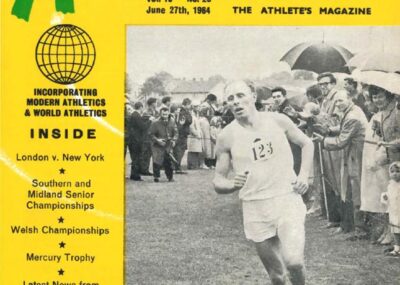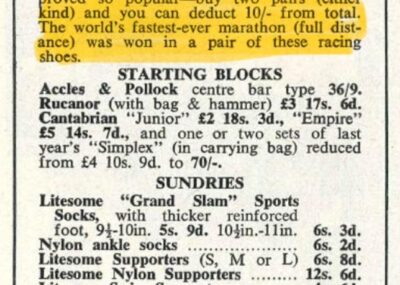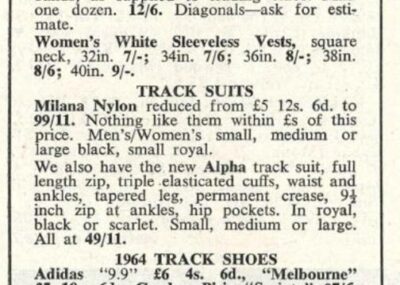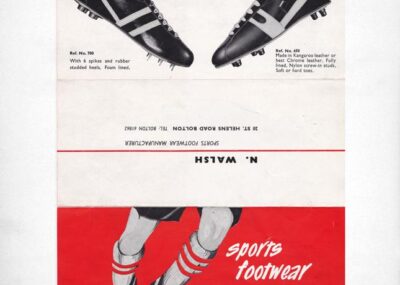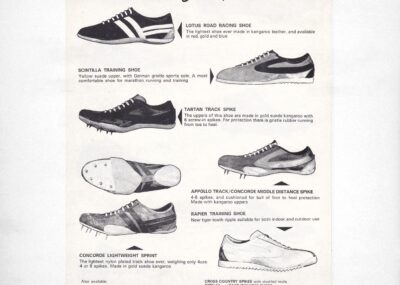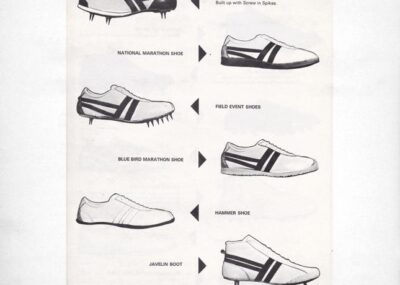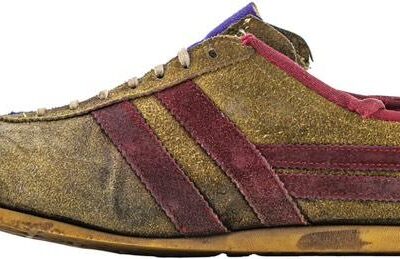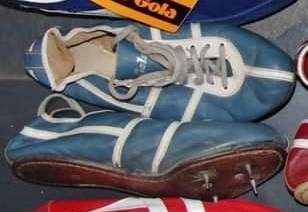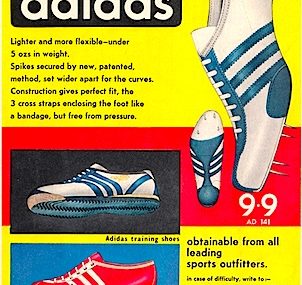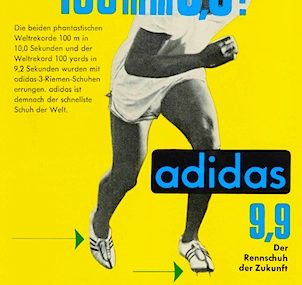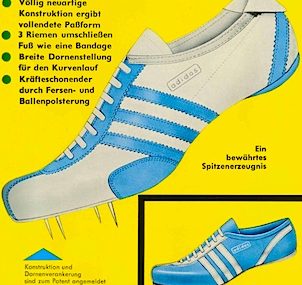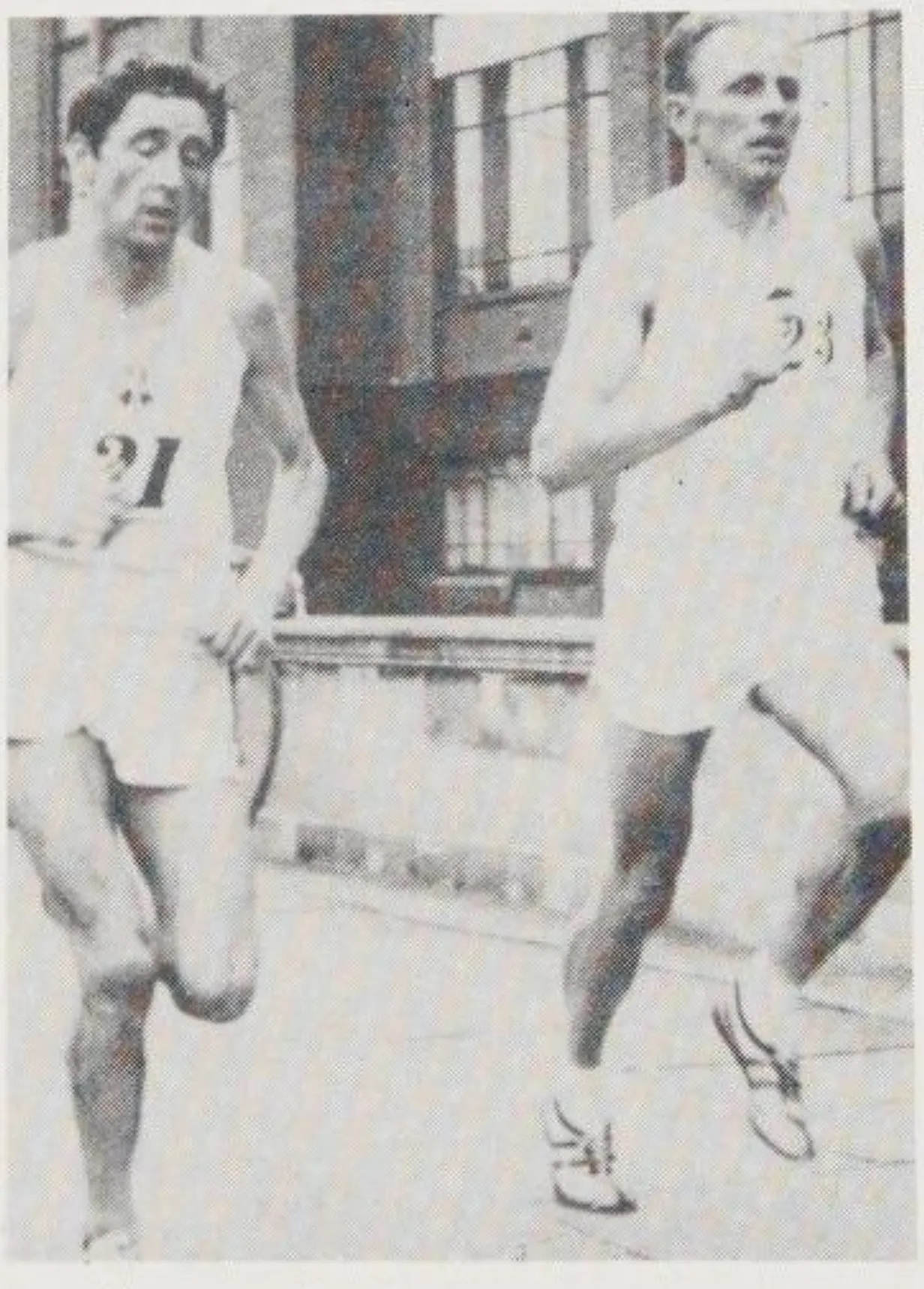
13-Jun-1964 – Polytechnic Marathon – 2:13:55 – Walsh Kangaroo Racing Shoes
Date of birth: 25-Dec-1933 (died 3-Aug-2019 – aged 85)
Nationality: English
World Record Duration: 4 months, 8 days
The athlete:
Basil Heatley dabbled in marathon running earlier in his career, but much preferred cross country running where he won multiple titles at home before conquering the International Cross Country Championship in 1961. It was that same year that he set the new world record in the 10 mile distance.
He had previously missed selection for the 1960 Olympics, and set his sights for the 1964 event. Heatley believed his best bet was in the marathon, so he shifted his training accordingly. At his peak, Heatley was putting in 125 miles each week. He took every opportunity for training, Heatley even running to and from work to build his mileage. In 1964, he lined up for the Polytechnic Marathon, the key qualification test for the Olympics. As you can read more about in this article here, it was one of the most significant marathons in Europe, the course based on that used at the 1908 Olympics and where the standard distance of 26 miles 385 yards was first implemented.
Starting gently, Heatley soon found himself climbing up the standings. He caught the leader, Ron Hill, with five miles to go. The pair fought over the lead, but with half-a-mile left, Heatley started sprinting, and took the win. His time was an incredible 2:13:55, the first man ever beneath 2:14. It was more than enough to get Heatley into the Olympics. He faced weather on race day that was extremely humid and warm by marathon standards. Heatley developed a stitch soon after starting, and took the first half at an easy pace. He would soon find pace, running with countryman Brian Kilby as the two made their way up the field.
Nearing the finish, Heatley could see he was gaining on Kōkichi Tsuburaya. Sensationally, he started sprinting just as he had at the Polytechnic Marathon and snatched second place inside the stadium itself. He was four minutes behind the legendary Abebe Bikila, and while acknowledging his own achievement Heatley still believed he was outclassed. Heatley would retire from competitive running when he got home, but his silver still stands as the highest finish for Great Britain in the men’s marathon.
The shoes:
I had initially struggled to even find clear photographs of Heatley from the day of the 1964 Polytechnic Marathon to see the racing flats he wore. Thankfully, my searches paid off and eventually I was able to come across images of the race from Ron Hill’s autobiography, from the archives of the University of Westminster, and a contemporary issue of Athletics Weekly.
Heatley’s shoes had distinctive stripes, with one down the front of the shoe and two spaced some distance apart on the midfoot complete with one final stripe rising diagonally to the back. They did not closely resemble any of the major brands at the time.
Confusing matters further was that Heatley had until that race worn modified Adidas 9.9 track spikes for distance races. As they started wearing down through racing in shorter distances, he would take them to a local cobbler who replaced the sole, put on new rubber and added extra cushion. Interestingly, in 2003 Adidas released limited numbers of a similarly modified version of the 1956 Melbourne track spike, from which the 9.9 track spike was developed.
We also know that for the 1964 Olympics, Heatley would wear the Onitsuka Tiger Super Marup. It was an incredibly popular and successful racing flat that in only slightly updated form would still be used to win major international marathons as late as 1983. You can read about them here in my article on Toru Terasawa.
Back to the shoes Heatley wore to set the marathon world record.
On the day of the 1964 Polytechnic Marathon however, Heatley recalled that “my feet were happy to be in a pair of lightweight racing shoes rather than the conventional worn-out track spikes which I used for most of my training” which rules out the converted track spikes, noting that there was no reason that in replacing the sole the cobbler would have removed the third Adidas stripe.
The @Spartan_Harriers account on Instagram suggested that the shoes may have been made by English manufacturer Gola. Although more known for football boots, their track spikes (and likely racing flats) of the time had similar overlays. Further information provided by the Northampton Museum and Art Gallery further reinforced this potential identification.
That was until I got in touch with the archivist for Walsh, another storied English maker of athletic footwear. They found an old advertisment from 1964 that clearly stated that it was Walsh Kangaroo Racing Shoes that set the marathon world record. The kangaroo reference is most likely to the type of leather used.
Although Heatley’s wife did not recall him ever buying Walsh shoes, it should be noted that the company made unbranded shoes (that were almost certainly technically identical) for retailers The Sports Centre and Stan Eldon Sports. This would help explain the confusion.
Walsh would continue to develop the model into the Lotus, which continued the minimalist design that characterised racing flats of the era. Please visit the @arqvst on Instagram for more historical information about Walsh and other running shoes.
References:
https://en.wikipedia.org/wiki/Basil_Heatley
http://www.racingpast.ca/john_contents.php?id=169
https://www.instagram.com/p/B7itWTSDpvF/
http://oldposter.sneakerlab.net/adidas/adidas-9-9-track-shoes-the-fastest-shoe-in-the-world-1960-20150423.html
http://oldposter.sneakerlab.net/adidas/adidas-9-9-track-shoes-100-m-in-9-9-1960-20150425.html
https://athleticsweekly.com/shoeguide/article/the-best-adidas-running-shoes
http://vintageadidasandpuma.blogspot.com/2016/08/
http://isoh.org/wp-content/uploads/2015/03/177.pdf
http://www.ianridpath.com/polymarathon/history.html
http://www.racingpast.ca/bob-phillips.php?id=25
https://corp.asics.com/en/about_asics/history
https://www.worldathletics.org/heritage/mowa
https://kingstonandpoly.org/archive/id115-THE%20POLYTECHNIC%20MARATHON%20-%20A%20SHORT%20HISTORY.html
https://beyondthelastman.com/2014/09/26/gola-boots-1963-70/
https://www.gola.co.uk/about-gola-i1
https://www.northamptonmuseums.com/
https://www.instagram.com/spartan_harriers/
https://northamptonmuseums.wordpress.com/
